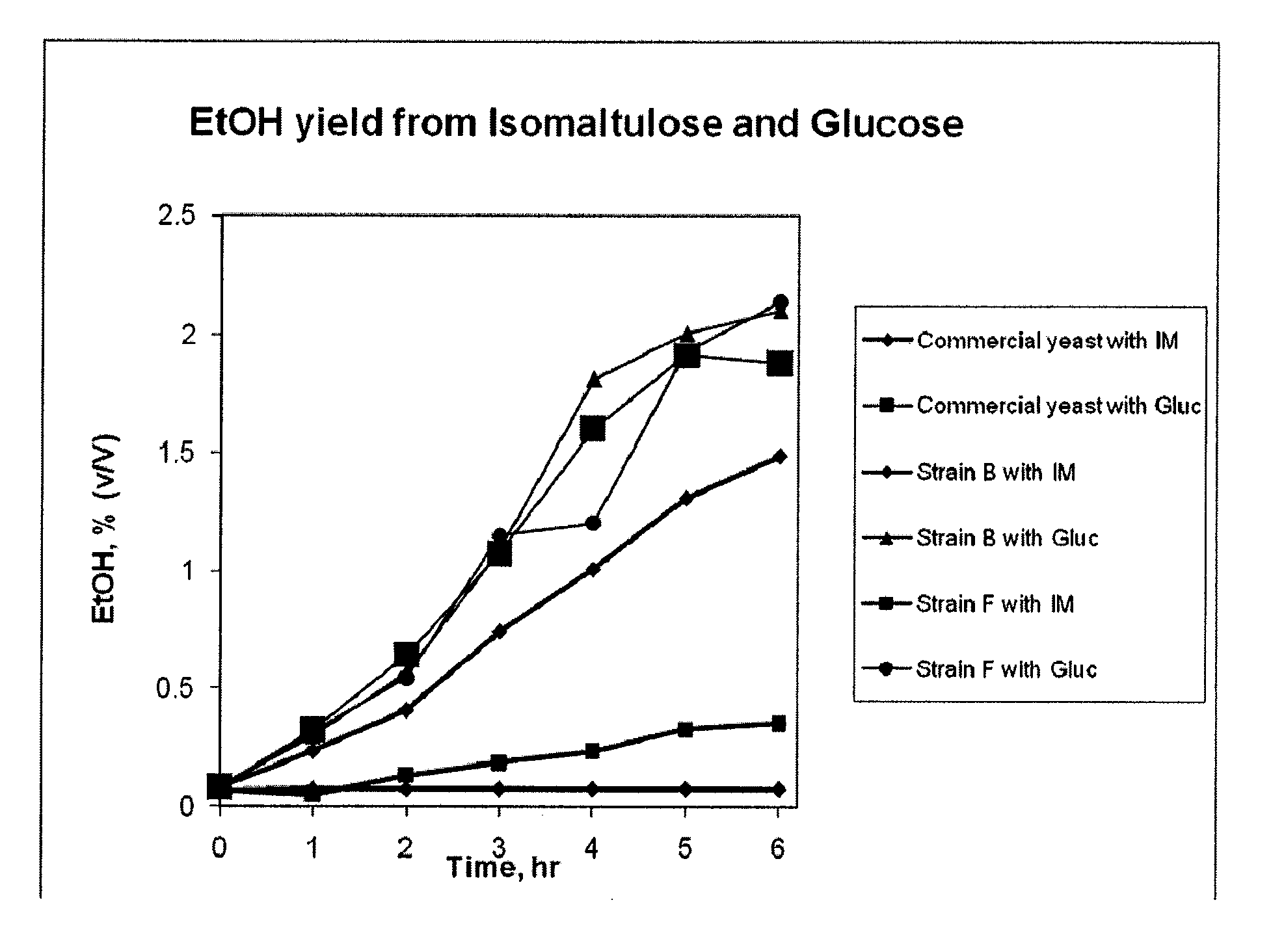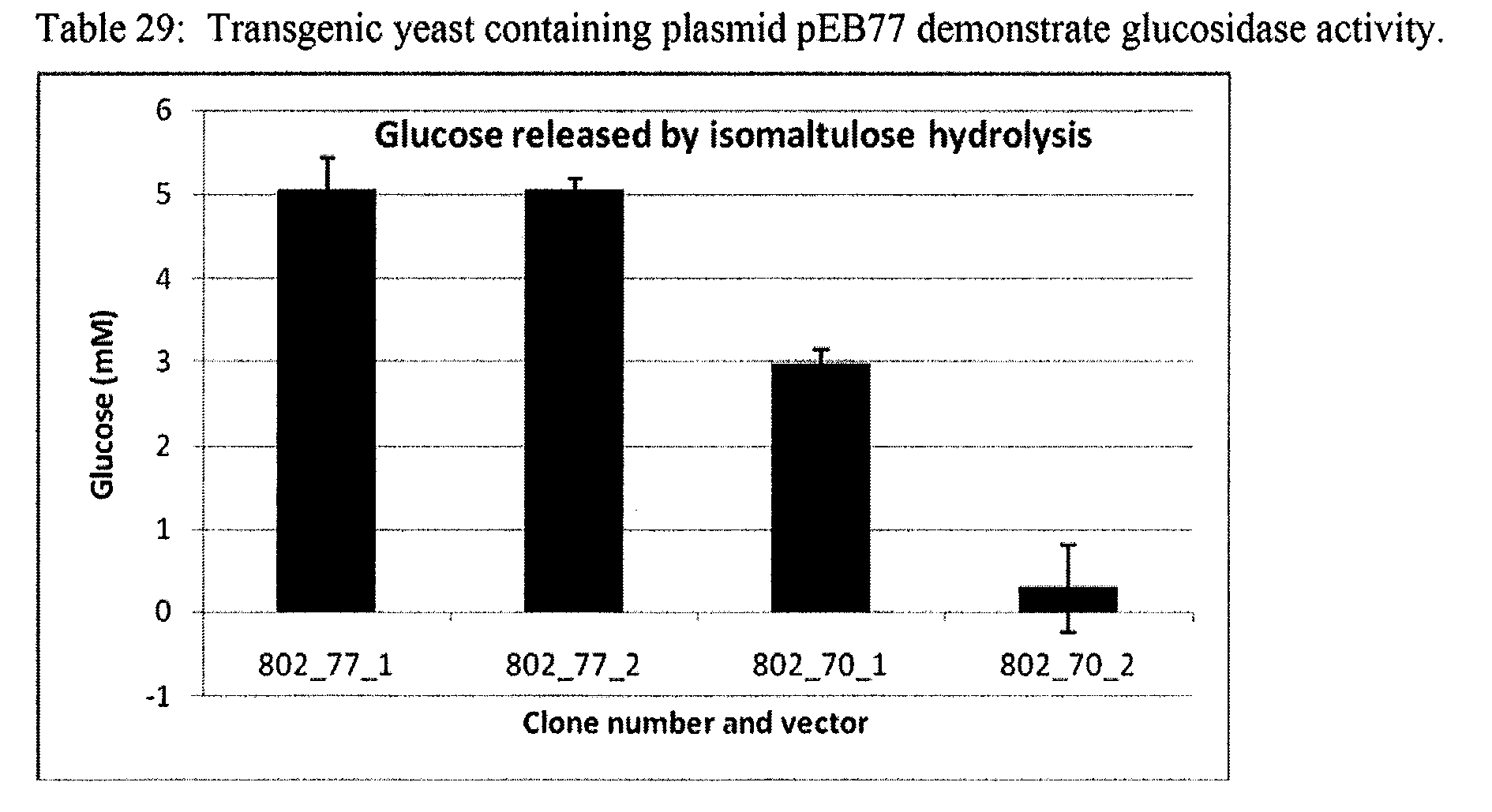Compositions and methods for producing fermentable carbohydrates
a technology of fermentable carbohydrates and compounds, applied in the field of plant molecular biology, can solve the problem of no useful change in harvestable yield, and achieve the effect of increasing the total locked carbohydrate content in the plan
- Summary
- Abstract
- Description
- Claims
- Application Information
AI Technical Summary
Benefits of technology
Problems solved by technology
Method used
Image
Examples
example 1
Enzymes that can Produce Locked Sugars
1A: Bacterial Expression System of His-Tagged Enzymes
[0151]Selected genes coding for specific enzymes were cloned into an Escherichia coli expression vector, pET24b (Novagen), using restriction sites that place the coding sequence in-frame downstream of an inducible T7lac promoter. Polynucleotide sequences coding for specific enzymes were generated by back translating the polypeptide sequence of the enzyme using the codon preference for E. coli. The expression plasmids were introduced into an E. coli expression strain, BL21 Star (DE3) (Invitrogen). Recombinant E. coli isolates containing the modified pET24b expression vector were selected on standard LB agar containing 50 ug / mL kanamycin.
[0152]Recombinant E. coli isolates were grown with shaking at 37 degrees C. for 8 hours to overnight in 20 mL of LB media containing 50 ug / mL kanamycin. The 20 mL of E. coli culture was transferred to 1 L of autoinduction media (9.57 g trypton, 4.8 g yeast extra...
example 2
Enzymes that Unlock Locked Sugars
2A: Fructanase (EC 3.2.1.80, E.C. 3.2.1.7)
[0182]Fructanases are fructosydases which catalyze the hydrolysis of fructosidic linkages in fructans to break the fructan down into simpler sugar molecules. Fructans can be hydrolyzed to fermentable sugars through the catalytic activity of fructanases. For Example, the fructanase 2,1-β-D-fructan fructanohydrolase [EC 3.2.1.7] can hydrolyze fructan polymers into fructose monosaccharides which can be fermented to form ethanol.
[0183]A codon optimized polynucleotide sequence coding for a fructanase enzyme may be synthesized, cloned into an expression vector and expressed in E. coli essentially as described in Example 1A.
[0184]Fructanase activity may be estimated by incubating a fructanase enzyme with a solution of fructan. Hydrolysis of fructan by the fructanase will release the monosaccharide fructose which may be detected by TLC or HPLC as described above for sucrose isomerase (Example 1B).
2B: Glucosidase
[0185...
example 3
Transgenic Plants
3A: Transgenic Sugarcane
[0204]Embryogenic callus was produced from the immature leaf tissue of sugarcane. In greenhouse, cane was harvested by cutting off immature shoots at or above ground level and outer leaves and leaf sheaths were stripped. Basal nodes and emergent leaves were trimmed. In the laboratory (laminar flow cabinet), excess leaf sheaths were unfurled, nodes were trimmed and cane was sterilized (sprayed with 70% ethanol or immersed in 20% bleach for 20 minutes). Additional outer leaf sheaths were removed to expose inner 4-6 leaf rolls and leaf roll was cut to manageable size (12-15 mm in length). Remaining basal nodes and internodes were removed to expose the leaf roll region just above the apical meristem.
[0205]Transverse sections of the leaf roll were cut to form discs 0.5-1.0 mm in thickness, using not more than a 3.0 cm length of the leaf roll material. Leaf roll discs were plated onto MS media containing 2-3 mg / L of 2,4-D and cultured in the dark f...
PUM
| Property | Measurement | Unit |
|---|---|---|
| Volume | aaaaa | aaaaa |
| Molar density | aaaaa | aaaaa |
| Molar density | aaaaa | aaaaa |
Abstract
Description
Claims
Application Information
 Login to View More
Login to View More - R&D
- Intellectual Property
- Life Sciences
- Materials
- Tech Scout
- Unparalleled Data Quality
- Higher Quality Content
- 60% Fewer Hallucinations
Browse by: Latest US Patents, China's latest patents, Technical Efficacy Thesaurus, Application Domain, Technology Topic, Popular Technical Reports.
© 2025 PatSnap. All rights reserved.Legal|Privacy policy|Modern Slavery Act Transparency Statement|Sitemap|About US| Contact US: help@patsnap.com



